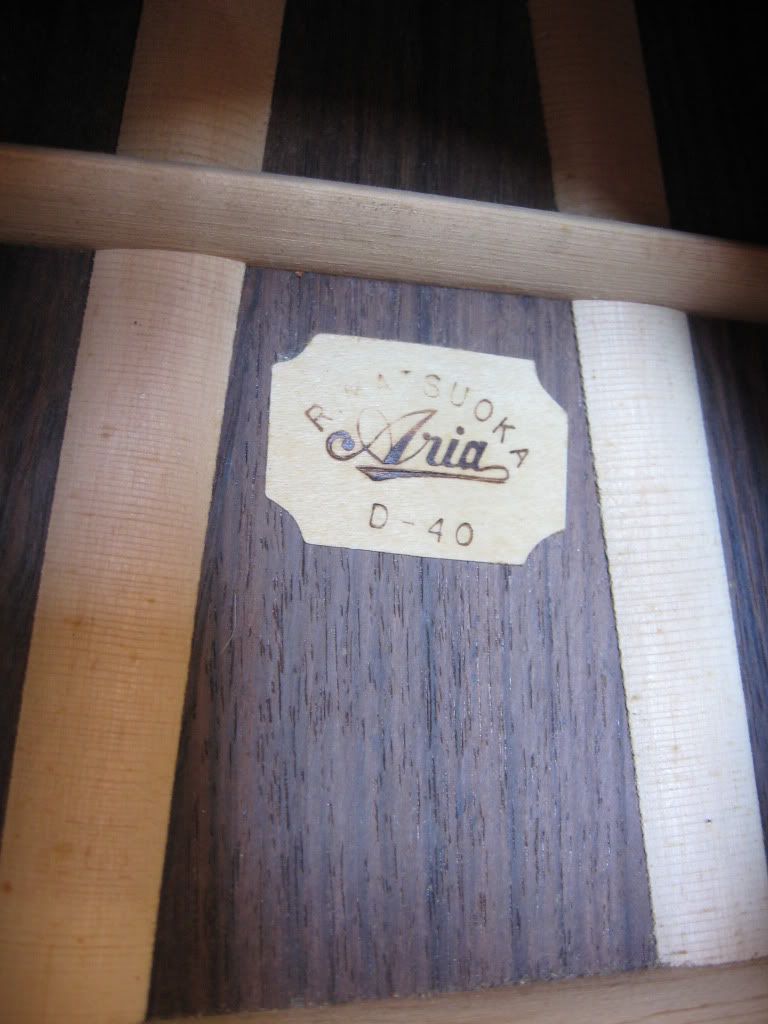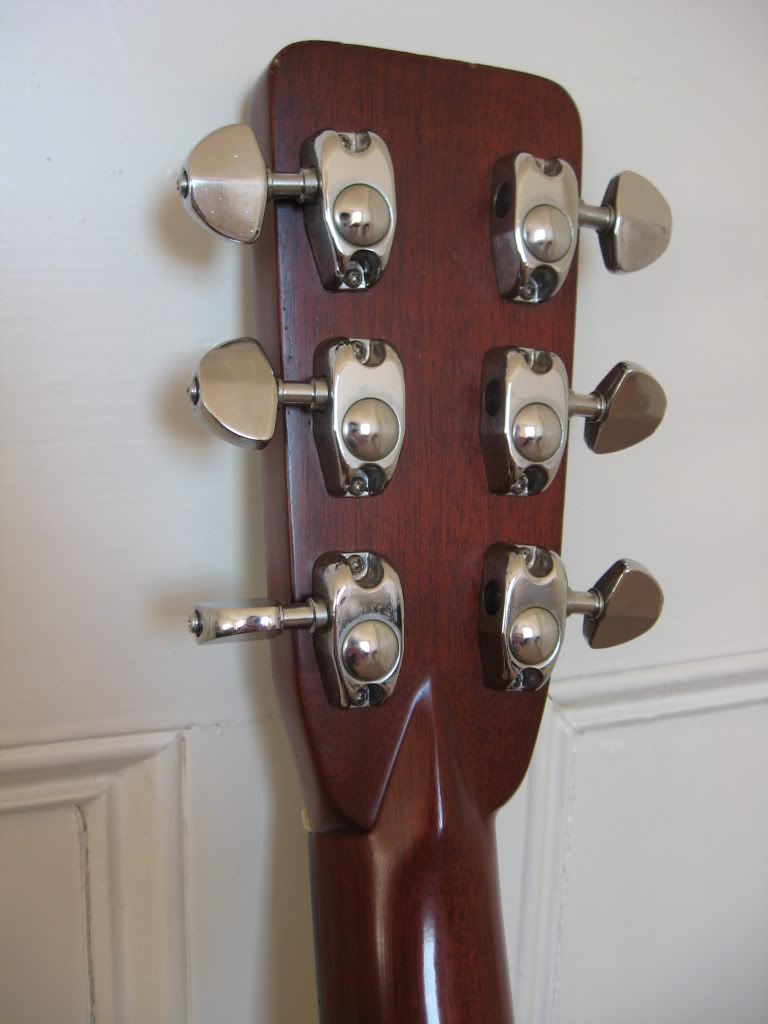Everyone reading this will of heard of Aria, and may of had the same outlook as me - nice enough but not great. You've seen them in the shop and they don't really compare to that Seagull or Simon & Patrick at about the same price. Most nowadays are made in China or Indonesia, with any of the top models in the current line up rarely brought in by shops outside of native Japan. Interestingly enough, their current line features the AD range, self-conceeding their pinnacle era of craft was the 70's and attempting to rekindle the past. Few people i imagine recall those guitars, seeing as so few made it in Western markets. Indeed, here was another array of quality acoustics that eluded the West and triumphed in their home market. Thankfully old catalogues helped me uncover the rather fantastic past it had and steer me to my first Aria purchase.
Aria as we know it, actually started as Arai in the mid-60's. Like many other brands in Japan, the music scene at the time drove a whole new wave of instrument manufacturers and new factories to meet the damand the scene inspired. The earliest of these Arai's were primarily plywood construction copies of Martin's and Guilds, occasionally under the brand Diamond. Personally these are not a shade on what they went on to produce 5 years later. With the change from Arai to Aria, and switching to Matsumoku factories to construct their acoustic and some of the electric range of guitars, Aria began to offer real quality. I've mentioned Matsumoku before in the Westone entry, without mentioning Ryo Matsuoka, who was the head designer for Matsumoku. Matsuoka was a highly skilled luthier who went about constructing exceptional Martin copies under the Aria brand throughout the 70's. He also formed his own small company making nylon strung acoustics which are still made to this day. Indeed his name is synonmous with quality instruments for the past 30 years in Japan.
I have a few Arias from this era, but this entry is about my Aria D40, which was my first. As mentioned before, nomenclature is a useful guide. D stands for dreadnought, whilst 40 indicates it cost Y40,000 on it's release in 1973. Back in 1973, this was certainly not cheap in Japan, but certainly much cheaper than a Martin would cost. The D range was their flagship range, based purely on the Martin guitars of the same title. Everything about this D40 is Martin-esque. The diamond headstock joint, the 3-piece back inspired from the Martin D35, the headstock logo Aria Dreadnought in the same font and italic as the Martin & Co logo. This is very easily mistaken for a Martin guitar, and i don't think that stops once you start playing it either. This is quite a heavy guitar, with really fine construction, featuring a solid german spruce top, coral rosewood sides, and a three peice brazilian-indian-brazilian rosewood back, with intricate mosiac inlays separating the woodtypes. The neck is a chunky v shape, again identical to Martin guitars of the time, with quite unique tuners. I don't know if these are in-house Aria tuners or Gotoh/Schaller, but they are amongst the best i have used. Rock solid tuning. I am tempted to lower the action a little, shave down the bone bridge, as the action is a little high at 8mm at the 12th fret, but it plays very well. If anything, the clearance really allows this one to sing; it really is full bodied and complex, with excellent balance - not so much the booming bass of the Westone, it has a lot of mids in its mix aswell. What continually suprises me is how well these guitars hold up. This is now 37 years old, and looks flawless. The top has faded a little, but it is completely scratch free, and the internal bracing and glued joints/saddle are completely solid. Attention to detail and the amount of hand-craftmanship really stands testament when playing this guitar. I will share a video and/or sound file of this in a later entry (once i sort out compressing the videos) , but here are the usual photos to enjoy until then:



Rest of the photos are here